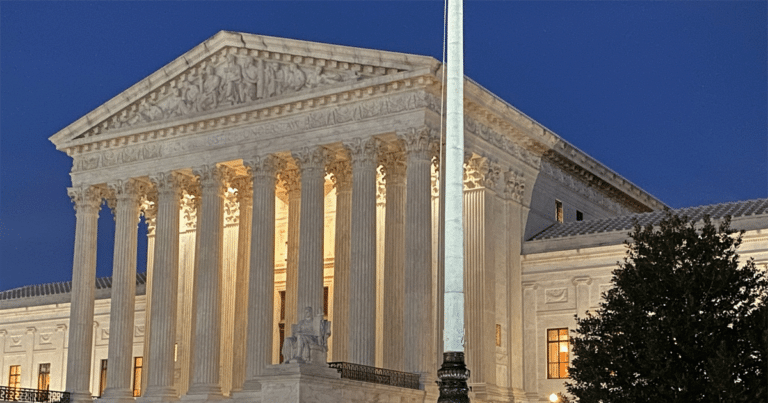
Ever feel like the government in Washington is a giant machine that just keeps growing, no matter what? Like it has a mind of its own, and it’s not always working for you, the hardworking American taxpayer. It’s a common feeling, like watching weeds take over a garden you’re trying to keep tidy.
Well, some people are finally trying to put the brakes on that runaway train and bring a little common sense back to the nation’s capital. It’s a tough fight, like trying to wrestle an octopus covered in sticky tape, but the battle for accountability and a smaller, smarter government is well and truly on. And now, that fight is heading to the highest court in the land.
President Trump’s administration is taking bold steps to deliver on a promise many Americans have longed to see: shrinking the overgrown federal workforce. The plan involves what’s known as “Reductions in Force,” or RIFs – a straightforward way to make government leaner and more focused on serving the people, not itself. But, as you might expect, not everyone is thrilled with the idea of less bureaucracy.
The Bureaucracy Bites Back
Almost immediately, the usual suspects tried to throw a wrench in the works. A group made up of unions, various non-profit groups, and even some local governments sued to stop the President. A federal judge in San Francisco, Susan Illston, sided with them, claiming the President needed special permission from Congress to make these kinds of personnel changes. The 9th U.S. Circuit Court of Appeals, often a roadblock for common-sense conservative policies, agreed, calling the President’s actions “unprecedented.” It seems some people prefer the swamp just the way it is – murky and expensive.
But President Trump isn’t one to back down from a fight, especially when it’s about keeping his promises. His administration has now taken the case all the way to the U.S. Supreme Court. They’re asking the justices to immediately step in and allow these vital plans to move forward. U.S. Solicitor General D. John Sauer argued that the lower court’s decision is causing “ongoing and severe harm” and is based on an “indefensible premise.” The Justice Department rightly pointed out that managing federal agencies “lies at the heartland” of the President’s powers under Article II of the Constitution.
In an emergency appeal, the administration laid out the stakes clearly.
From ‘Fox News,’ quoting U.S. Solicitor General D. John Sauer:
“interferes with the executive branch’s internal operations and unquestioned legal authority to plan and carry out RIFs, and does so on a government-wide scale.”
“More concretely, the injunction has brought to a halt numerous in-progress RIFs at more than a dozen federal agencies, sowing confusion about what RIF-related steps agencies may take and compelling the government to retain – at taxpayer expense – thousands of employees whose continuance in federal service the agencies deem not to be in the government and public interest.”
This isn’t just about trimming the fat; it’s about ensuring the government is efficient and responsible with your money.
Draining the Swamp: More Than Just Talk
This push to streamline the federal workforce isn’t happening in a vacuum. It’s part of a larger effort, highlighted by initiatives like the (now former) Department of Government Efficiency, or DOGE. Even though Elon Musk, who briefly headed DOGE, has moved on, he said his departure did “not mark the end of DOGE ‘but rather, the beginning.'” This signals a determined, ongoing commitment to fulfilling that promise to “drain the swamp” and make Washington work for the American people again, not the other way around.
The question now is whether the Supreme Court will clear the path for these common-sense reforms. This is more than just a legal squabble; it’s a pivotal moment for fiscal sanity and a President’s ability to deliver on the mandate given to him by the voters. The outcome will tell us a lot about whether true change can finally come to Washington, or if the swamp creatures will continue to guard their turf at the taxpayer’s expense. All eyes are now on the Supreme Court, hoping they’ll help let some fresh air into the federal government.
Key Takeaways:
- President Trump aims to shrink government, saving taxpayer money and boosting efficiency.
- Lower courts blocked these cuts, siding with big government advocates like unions.
- Trump’s SCOTUS appeal defends executive power and fights costly bureaucratic delays.


